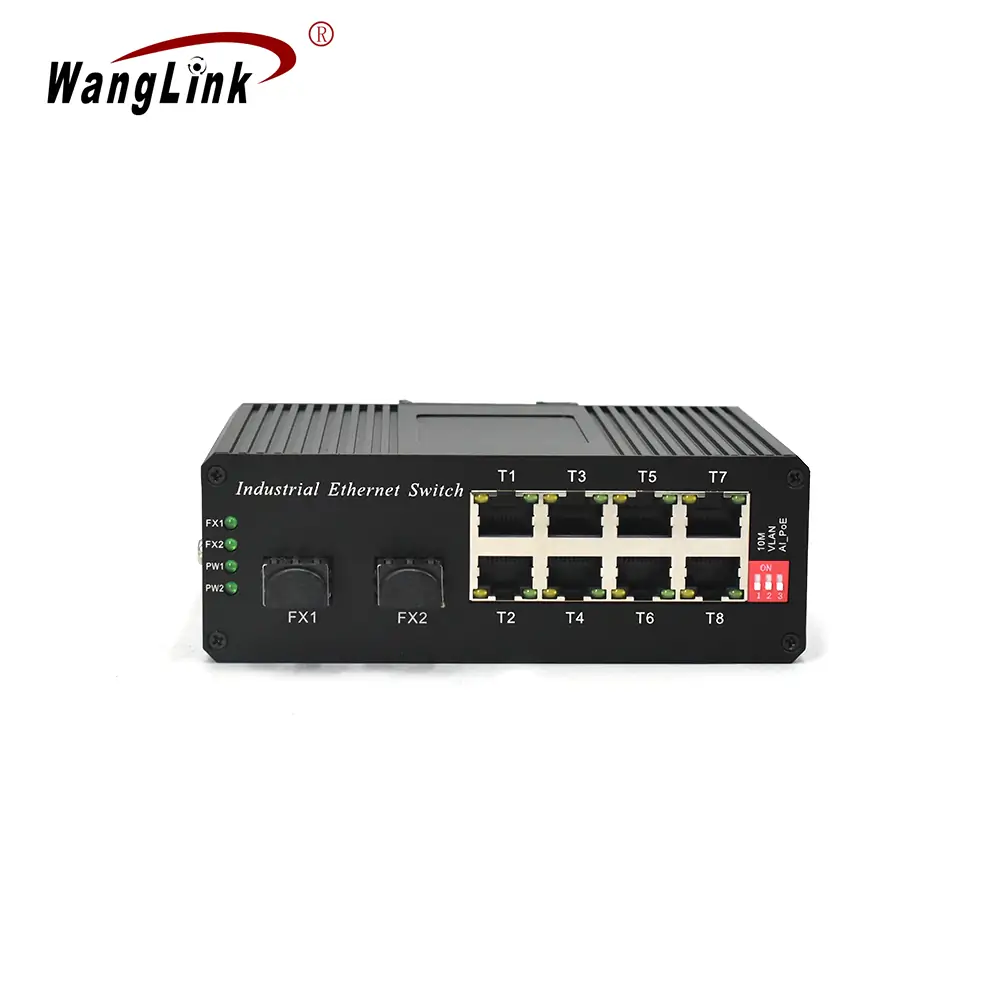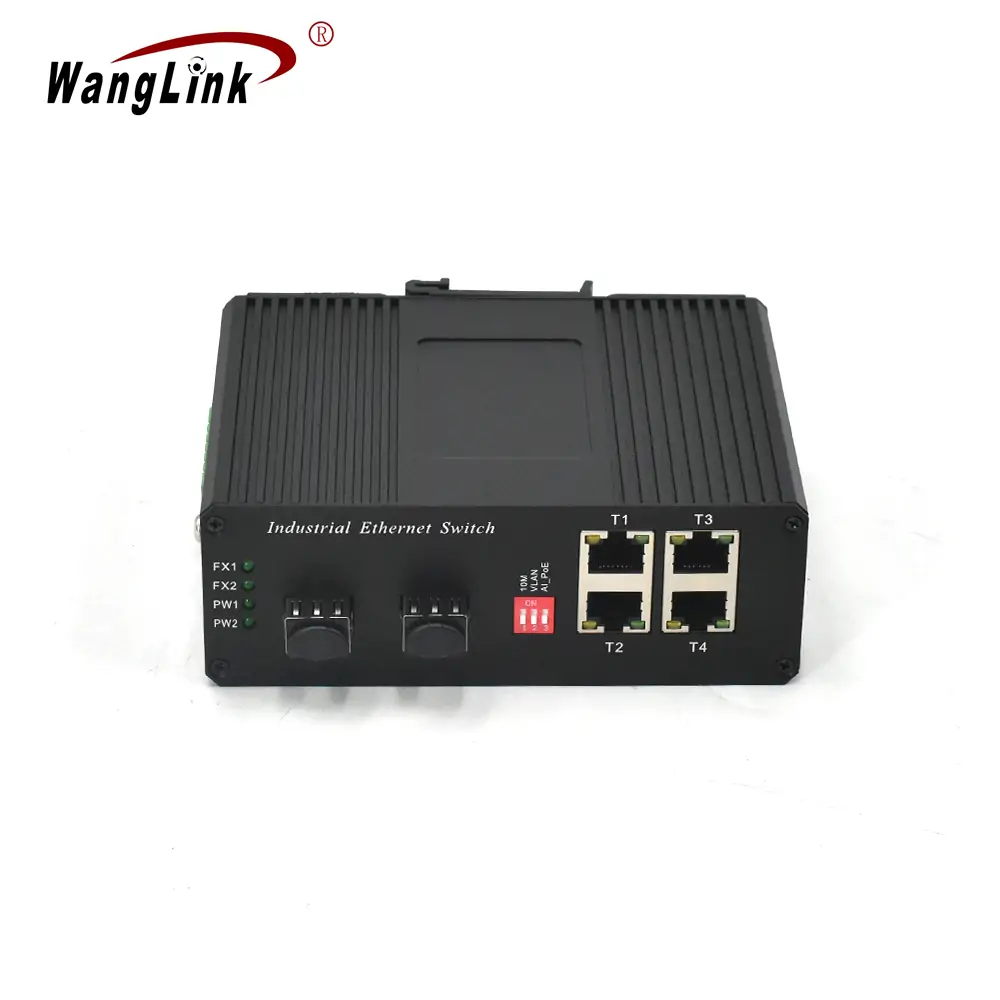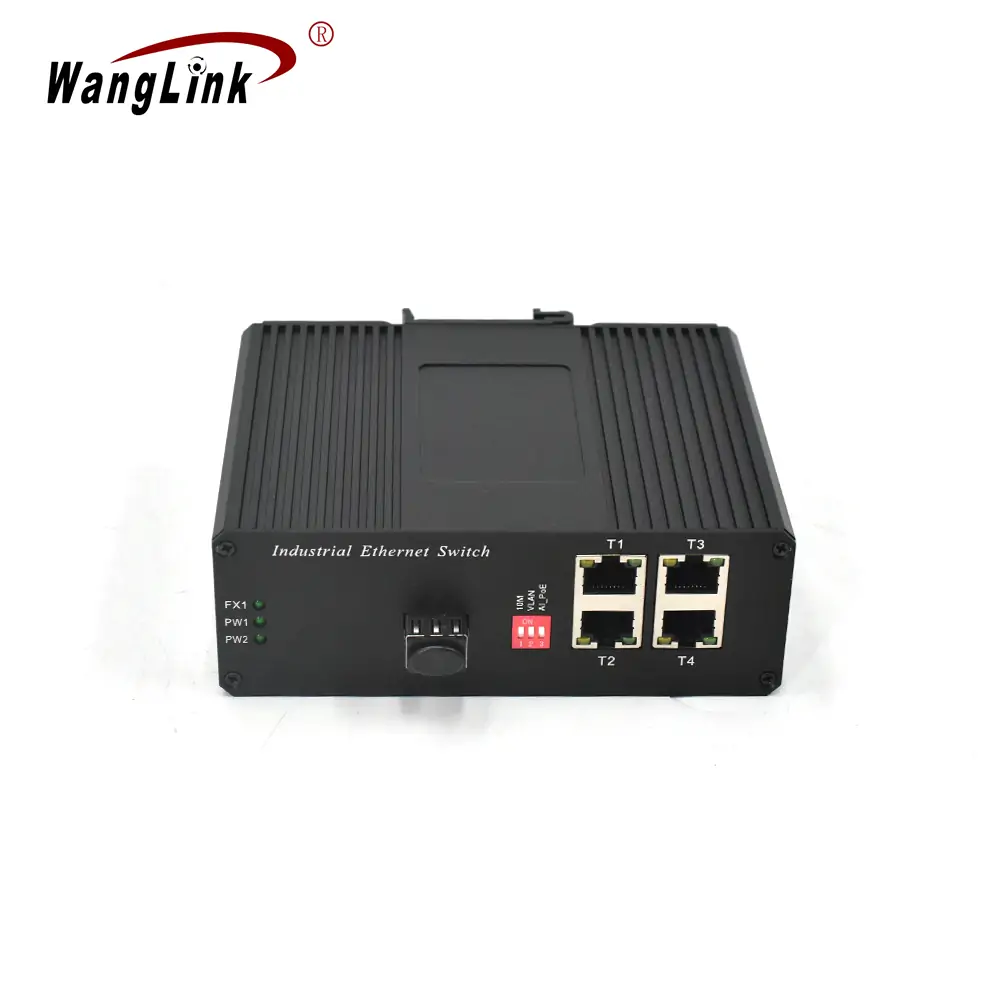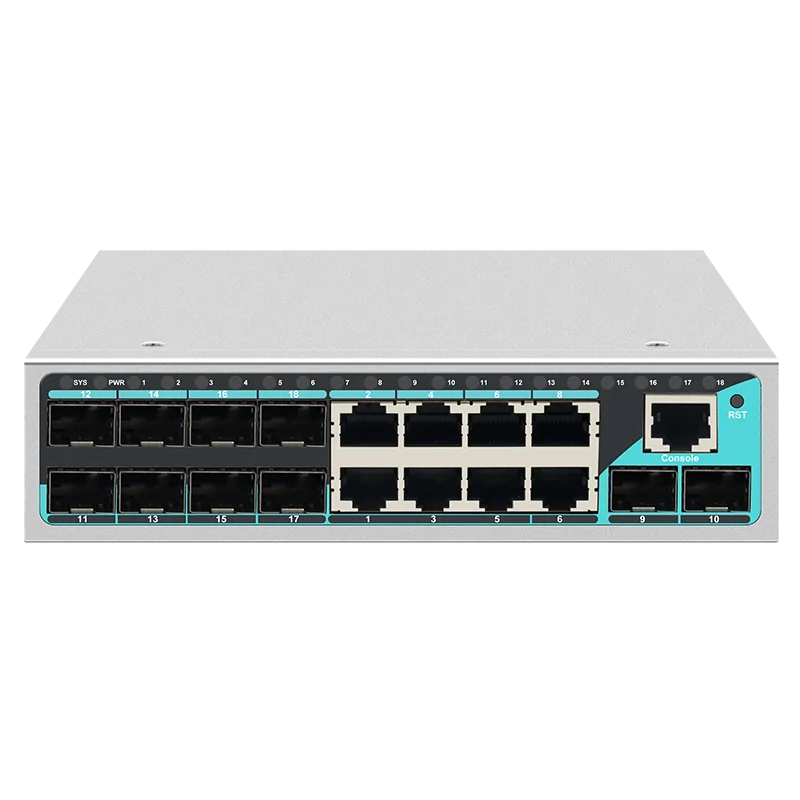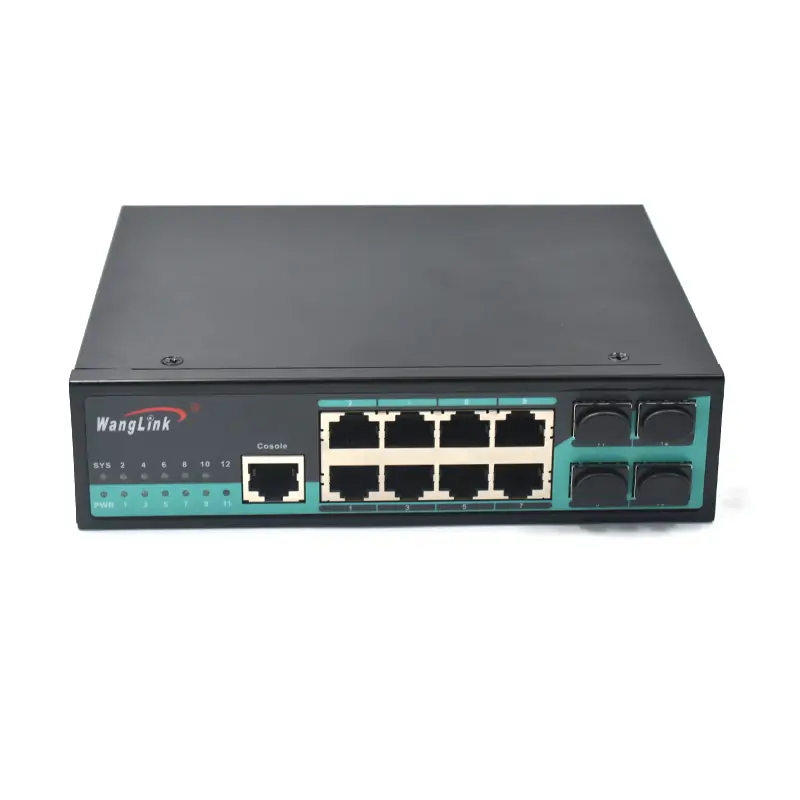Small Ethernet Switch Guide: Choosing the Perfect Compact Network Solution for Your Business
In today’s interconnected world, businesses of all sizes require reliable networking infrastructure that doesn’t compromise on space or performance. Small ethernet switches have emerged as the perfect solution for organizations seeking powerful networking capabilities in compact form factors. Whether you’re setting up a home office, expanding a small business network, or deploying equipment in space-constrained environments, understanding the nuances of small ethernet switches is crucial for making informed decisions.
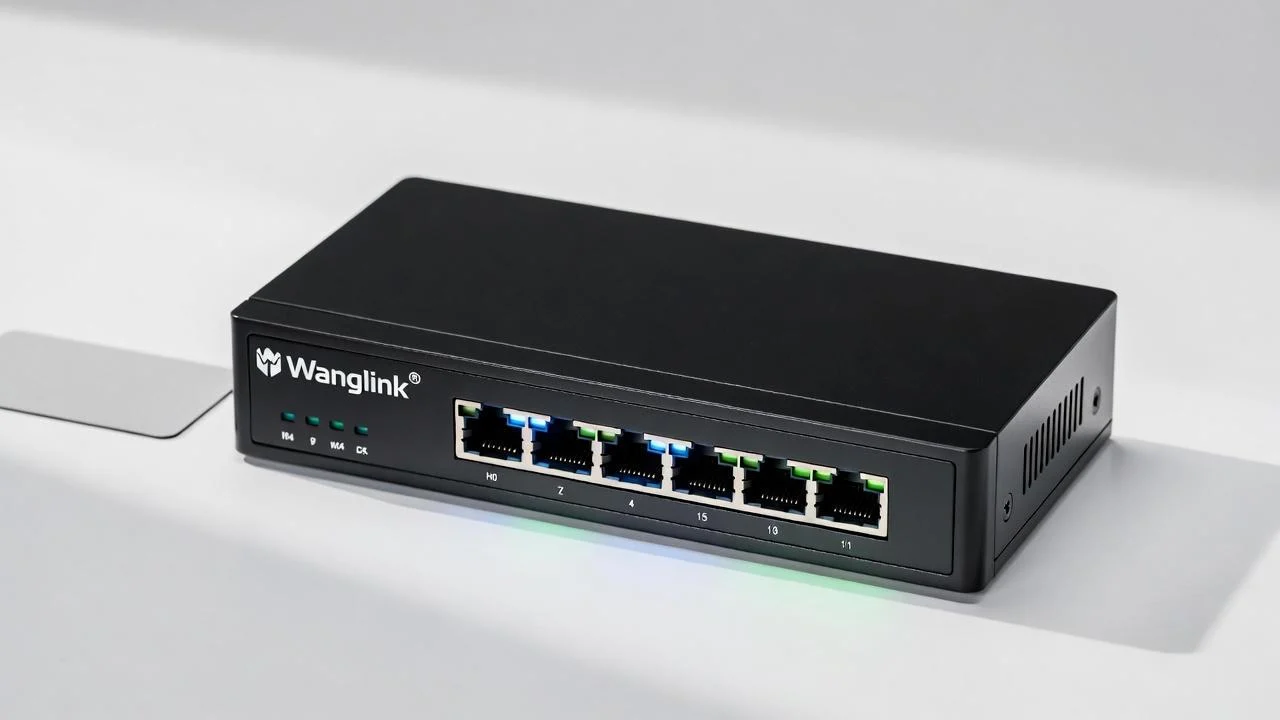
Understanding Small Ethernet Switches
What Defines a Small Ethernet Switch?
A small ethernet switch typically refers to networking devices with 4 to 16 ports, designed for desktop or wall-mount installation. These compact network switches prioritize space efficiency while maintaining essential networking functionalities. Unlike their larger counterparts, small ethernet switches focus on providing reliable connectivity for limited device counts without requiring extensive rack space or complex management interfaces.
The key characteristics that define small ethernet switches include:
- Port Count: Usually ranging from 4 to 16 ports
- Form Factor: Desktop or wall-mountable designs
- Power Consumption: Energy-efficient operation
- Management: Often unmanaged or lightly managed
- Installation: Plug-and-play functionality
Types of Small Ethernet Switches
Small ethernet switches come in various configurations to meet different networking requirements:
Unmanaged Small Switches
These plug-and-play devices require no configuration and are perfect for basic connectivity needs. They automatically handle network traffic and provide reliable data transmission without user intervention.
Managed Small Switches
Offering advanced features like VLAN support, QoS controls, and remote management capabilities, these switches provide greater network control while maintaining compact form factors.
PoE Small Switches
Power over Ethernet switches combine data transmission with power delivery, eliminating the need for separate power adapters for connected devices like IP cameras, wireless access points, and VoIP phones.
Key Features and Benefits
Space Efficiency and Design
Small ethernet switches excel in environments where space is at a premium. Their compact designs allow for flexible installation options:
- Desktop Placement: Fits easily on desks or shelves
- Wall Mounting: Saves valuable desk space
- Under-desk Installation: Keeps switches accessible yet out of sight
- Mobile Deployments: Portable for temporary setups
Performance Characteristics
Despite their compact size, modern small ethernet switches deliver impressive performance:
| Feature | Specification | Benefit |
|---|---|---|
| Data Rate | 10/100/1000 Mbps | High-speed connectivity |
| Switching Capacity | Up to 32 Gbps | Non-blocking performance |
| MAC Address Table | 8K+ entries | Efficient traffic handling |
| Buffer Memory | 1.5MB+ | Reduced packet loss |
| Latency | <10 microseconds | Real-time applications |
Energy Efficiency
Small ethernet switches incorporate energy-saving technologies:
- IEEE 802.3az Energy Efficient Ethernet: Reduces power consumption during low traffic periods
- Auto Power-Down: Automatically reduces power when ports are inactive
- Green Ethernet: Optimizes power usage based on cable length
- Fanless Design: Silent operation with passive cooling
Applications and Use Cases
Small Office/Home Office (SOHO) Networks
Small ethernet switches are ideal for SOHO environments where reliable connectivity is essential but space and budget constraints exist. These switches enable:
- Multi-device Connectivity: Connect computers, printers, and storage devices
- Internet Sharing: Distribute internet access across multiple devices
- Network Expansion: Easily add more devices to existing networks
- Cost-effective Solutions: Affordable networking without enterprise complexity

Retail and Point-of-Sale Systems
Retail environments benefit from small ethernet switches for:
- POS System Connectivity: Connect cash registers, card readers, and receipt printers
- Inventory Management: Link barcode scanners and inventory systems
- Security Integration: Connect IP cameras and access control systems
- Customer Wi-Fi: Support wireless access points for customer connectivity
Industrial and Manufacturing Applications
Small industrial ethernet switches serve critical roles in manufacturing:
- Machine Connectivity: Connect PLCs, HMIs, and sensors
- Data Collection: Enable real-time monitoring and analytics
- Process Control: Support automation and control systems
- Environmental Monitoring: Connect temperature and humidity sensors
Educational Institutions
Schools and training centers utilize small ethernet switches for:
- Classroom Networks: Connect student computers and interactive whiteboards
- Laboratory Equipment: Link scientific instruments and measurement devices
- Administrative Systems: Support office equipment and communication systems
- Digital Learning: Enable multimedia and online learning platforms
Case Study: TechStart Solutions Network Upgrade
TechStart Solutions, a growing software development company with 25 employees, faced networking challenges in their expanding office space. Their existing consumer-grade router couldn’t handle the increasing demand for reliable connectivity across multiple departments.
The Challenge
- Limited Port Availability: Only 4 ports on existing router
- Performance Issues: Frequent network slowdowns during peak hours
- Scalability Concerns: Need for future expansion capability
- Budget Constraints: Cost-effective solution required
The Solution
TechStart Solutions implemented a distributed network architecture using multiple small ethernet switches:
- Main Distribution: SG802M Gigabit Layer 2 Ethernet Switch with 8 RJ45 ports and 2 SFP uplinks
- Department Switches: Additional 8-port unmanaged switches for each department
- Conference Room: 5-port PoE switch for IP phones and wireless access points
Implementation Details
The network topology included:
- Core Switch: Centrally located for optimal performance
- Department Switches: Strategically placed to minimize cable runs
- Uplink Configuration: Fiber connections between floors using SFP ports
- Power Management: PoE switches for powered devices
Results Achieved
After implementation, TechStart Solutions experienced:
- 50% Improvement in network performance
- Zero Downtime during business hours
- 30% Reduction in network-related support tickets
- Future-Ready Infrastructure supporting up to 50 employees
The total investment of $2,800 provided a scalable foundation that eliminated network bottlenecks and supported the company’s growth trajectory.
Selection Criteria and Considerations
Port Requirements Analysis
Determining the right number of ports involves:
- Current Device Count: Inventory all devices requiring network connectivity
- Growth Planning: Account for 25-30% expansion capacity
- Device Types: Consider power requirements for PoE devices
- Network Segmentation: Plan for VLAN or departmental separation
Performance Requirements
Evaluate performance needs based on:
- Bandwidth Requirements: Calculate total throughput needs
- Application Types: Consider latency-sensitive applications
- Traffic Patterns: Analyze peak usage periods
- Quality of Service: Determine QoS requirements
Environmental Considerations
Small ethernet switches must operate reliably in various environments:
| Environment Type | Temperature Range | Humidity | Special Requirements |
|---|---|---|---|
| Office | 0°C to 40°C | 10% to 90% | Fanless operation |
| Industrial | -10°C to 60°C | 5% to 95% | Ruggedized housing |
| Outdoor | -40°C to 75°C | 5% to 95% | IP65+ rating |
| Vehicle | -25°C to 70°C | 5% to 95% | Vibration resistance |
Management and Monitoring
Consider management requirements:
- Unmanaged: Plug-and-play simplicity
- Web-Managed: Basic configuration via web interface
- SNMP Support: Integration with network management systems
- Cloud Management: Remote monitoring and configuration

Advanced Features in Modern Small Switches
Layer 2 and Layer 3 Capabilities
Modern small ethernet switches offer advanced switching capabilities:
- Layer 2 Switching: MAC address learning and forwarding
- VLAN Support: Network segmentation and isolation
- Spanning Tree Protocol: Loop prevention and redundancy
- Link Aggregation: Increased bandwidth and redundancy
Understanding the differences between Layer 2 and Layer 3 switches helps in selecting the appropriate functionality level.
Power over Ethernet (PoE) Integration
PoE-enabled small switches provide significant advantages:
- Simplified Installation: Single cable for data and power
- Cost Reduction: Eliminates need for separate power adapters
- Centralized Power Management: Monitor and control device power
- Emergency Backup: UPS protection for all connected devices
Security Features
Security capabilities in small ethernet switches include:
- Port Security: MAC address filtering and limiting
- Access Control Lists: Traffic filtering and blocking
- 802.1X Authentication: User and device authentication
- Storm Control: Protection against broadcast storms
Installation and Configuration Best Practices
Physical Installation Guidelines
Proper installation ensures optimal performance:
- Location Selection: Choose well-ventilated, accessible locations
- Cable Management: Organize cables to prevent interference
- Power Considerations: Ensure adequate power supply capacity
- Environmental Protection: Shield from dust, moisture, and extreme temperatures
Network Design Principles
Effective network design incorporates:
- Hierarchical Structure: Core, distribution, and access layers
- Redundancy Planning: Multiple paths for critical connections
- Bandwidth Allocation: Appropriate uplink sizing
- Future Expansion: Scalable architecture design
Configuration Best Practices
For managed switches, follow these configuration guidelines:
- Initial Setup: Change default passwords and update firmware
- VLAN Configuration: Implement network segmentation
- QoS Settings: Prioritize critical traffic
- Monitoring Setup: Enable SNMP and logging
Troubleshooting Common Issues
Connectivity Problems
Common connectivity issues and solutions:
- Link Down: Check cable integrity and port configuration
- Slow Performance: Verify duplex settings and cable quality
- Intermittent Connections: Inspect for loose connections
- No Communication: Confirm VLAN and IP configurations
Performance Optimization
Optimize switch performance through:
- Traffic Analysis: Monitor bandwidth utilization
- QoS Tuning: Adjust priority settings
- Buffer Management: Configure appropriate buffer sizes
- Firmware Updates: Install latest performance improvements
Maintenance Procedures
Regular maintenance ensures reliable operation:
- Visual Inspection: Check for physical damage or overheating
- Log Review: Monitor system logs for errors
- Performance Monitoring: Track key performance metrics
- Firmware Management: Keep firmware current
Future Trends and Technologies
Emerging Technologies
The future of small ethernet switches includes:
- Multi-Gigabit Ports: 2.5G and 5G Ethernet support
- Wi-Fi 6 Integration: Enhanced wireless connectivity
- IoT Optimization: Specialized features for IoT devices
- AI-Powered Management: Intelligent network optimization
Industry Standards Evolution
Upcoming standards affecting small switches:
- IEEE 802.3bt: Higher power PoE standards
- Time-Sensitive Networking: Deterministic communication
- Software-Defined Networking: Centralized network control
- Edge Computing: Distributed processing capabilities
Frequently Asked Questions
What is the difference between a small ethernet switch and a hub?
Unlike hubs that share bandwidth among all ports, small ethernet switches provide dedicated bandwidth to each port and create separate collision domains. Switches also learn MAC addresses and forward traffic intelligently, while hubs simply repeat all traffic to every port.
How many devices can I connect to a small ethernet switch?
The number of devices depends on the switch’s port count. However, you can cascade multiple switches to expand capacity. Each port supports one device, but you can connect additional switches to create larger networks.
Do small ethernet switches require configuration?
Unmanaged small ethernet switches work plug-and-play without configuration. Managed switches offer configuration options for advanced features like VLANs, QoS, and security settings, but basic connectivity works immediately upon connection.
Can I mix different speed devices on the same switch?
Yes, modern small ethernet switches auto-negotiate connection speeds. You can connect 10/100 Mbps and Gigabit devices to the same switch, with each port operating at the maximum speed supported by the connected device.
What’s the difference between PoE and regular ethernet switches?
PoE switches provide both data connectivity and electrical power through the ethernet cable, eliminating the need for separate power adapters for compatible devices. Regular switches only provide data connectivity.
How do I choose between managed and unmanaged small switches?
Choose unmanaged switches for simple connectivity needs where plug-and-play operation is sufficient. Select managed switches when you need features like VLANs, QoS, remote monitoring, or advanced security controls.
Can small ethernet switches handle video streaming and VoIP?
Yes, modern small ethernet switches with Gigabit ports and QoS capabilities can handle video streaming and VoIP traffic effectively. Look for switches with appropriate bandwidth and traffic prioritization features.
What maintenance do small ethernet switches require?
Small ethernet switches require minimal maintenance. Regular tasks include monitoring LED indicators, keeping firmware updated, cleaning dust from vents, and checking cable connections. Most switches operate reliably for years with minimal intervention.
Conclusion
Small ethernet switches represent the perfect balance between functionality, space efficiency, and cost-effectiveness for modern networking needs. Whether you’re building a new network or expanding an existing one, understanding the capabilities and applications of compact ethernet switches ensures you make informed decisions that support your organization’s growth and connectivity requirements.
As a leading ethernet switch manufacturer, Wanglink offers comprehensive solutions for businesses seeking reliable, high-performance small ethernet switches. With over 13 years of manufacturing experience and a commitment to quality, Wanglink provides the expertise and products needed to build robust, scalable networks.
For more information about our ethernet switch small solutions or to discuss your specific networking requirements, contact our expert team at [email protected] or WhatsApp +8613544167258. Visit our products page to explore our complete range of networking solutions, or learn more about our customization services for tailored networking solutions.

